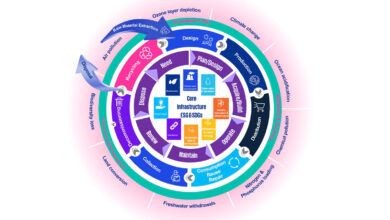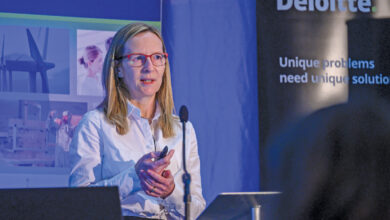Leitrim GAA chairman: ‘We have passion’

Enda Stenson, the chairman of Leitrim GAA, talks to Ciarán Galway and Odrán Waldron about challenges for the association in Leitrim, the future of the GAA, and ambitions for the county.
Currently serving the fourth year of a five-year term as county chairman, Stenson has firm roots in Leitrim GAA, having been a football referee for 33 years.
Describing his current role as “keeping things running as smooth as possible”, the Leitrim man emphasises the importance of the GAA to the social fabric in rural Ireland, stressing the need to support small clubs and ensure they are adequately resourced.
“Many people talk about intercounty games and getting to Croke Park but that accounts for less than 5 per cent of players. I am talking about the 95 per cent of the players which never see county but are playing football and hurling. They are the people which the county board must look after and care for.”
Emigration
On the challenges of rural depopulation and fielding club teams in the county, Stenson remarks: “Emigration has been with us since day one in Leitrim,” adding: “We had lots of emigration up to the 1970s. People had to go because there were no jobs. But now emigration has started again for a different reason. It is the thing to do; youngsters can go and travel for a few years. As a result, we are still losing our best.
“While we were losing them for one reason 50 years ago, we are now losing them for another. But the original factor continues to play a role; we do not have the jobs to keep young people close enough to home. Many of them feel they have to go to Dublin, or they have to go somewhere else for their careers. We need an industrial base in Leitrim. Maybe we have taken the first step to achieving it as a Leitrim man has been appointed CEO of the IDA. Hopefully that will help us to keep our best and brightest within the county.”
Despite the challenges presented by emigration from the county, Stenson acknowledges that many in the Leitrim diaspora have supported the county board from afar. “The New York diaspora is absolutely splendid. I cannot speak highly enough of them. They would do anything for us.”
This is reflected in the fact that GAA in Leitrim is currently sponsored by JP Clarke’s Saloon on McLean Avenue in Yonkers, New York. Owned and run by an Irish-American family with deep roots in the county, JP Clarke’s was the first US-based business to sponsor an intercounty team in Ireland. “We had nobody and then Seamus Clarke and his wife Caitríona Clarke, natives of Gortletteragh and Drumshanbo respectively, were approached and agreed to sponsor us. How can we show our gratitude? It is a huge commitment for people like the Clarkes; they are a family-run business, and they did it for their county which I think is worth far more than money can buy.”

Future of the GAA
Continuing with the theme of migration, Stenson insists that “depopulation of rural Ireland is a huge problem” for the GAA.
“The bedrock of the GAA has been rural Ireland. I know it has essentially moved to the urban centres. However, as the big clubs in the big cities grow, we all know that it is costing a certain amount of money to keep those clubs operating. This phenomenon is bordering on a certain level of professionalism. Counties like Leitrim and clubs in other rural regions cannot keep up with that.”
Whilst expressing his “great faith” in the new GAA president, County Armagh’s Jarlath Burns, fears for the future of GAA sports abound for Stenson.
“I do not know what type of GAA we will know in 20 years’ time because the road that we are on is unsustainable. We are solely dependent on our friends throughout Leitrim, our Leitrim Association in Dublin, and our Leitrim Association in New York to fund our county teams.”
This is a challenge which is further typified by the decline of hurling in the county, with only two hurling clubs currently competing. “We have Carrick Hurling Club and Cluainín Iomáint. The enthusiasm of the people that play it cannot be questioned but the finance to keep that on the road is in doubt.”
Describing it as “our national game”, Stenson adds that he “would be disappointed to see the demise of hurling” in the county, outlining his belief that “the only reason it is being questioned now is because of money”.
‘We have passion’
Although emigration has presented its challenges for Ireland’s least populous county, Stenson explains how the sports facilities in Leitrim enable the county to continue “punching above our own weight”.
“Practically every GAA club in the county has its own grounds, around 70 per cent of them have their own gym and clubroom, and I would say that around 20 per cent have an all-weather pitch. We have an excellent centre of excellence up by Annaduff with all-weather facilities. That is a significant facility for Leitrim to have.”
Another asset to the GAA in Leitrim, Stenson highlights, is the ever-present passion for the sports among supporters. “We have passion. If you were in Páirc Seán Mac Diarmada when Leitrim beat Laois in the National Football League in March [2023], you could see the passion. People going wild with excitement.
“While some might wonder what level we must reach, we do not have to reach any level at all for that atmosphere. You win at the level you are at, and people are happy with that. Someone from Kerry or Dublin may feel that Division Four means nothing, but the wins are huge. They mean everything to us.”
The county’s supporters and facilities allow Stenson to be hopeful for the future. He concludes his discussion expressing his ambition for the county to achieve promotion to Division Three, and to be “competitive” in the Tailteann Cup.
|
Enda Stenson is the chairman of Leitrim GAA, a role he has held since December 2019. Before this, he was a football referee for 33 years, officiating three Connacht Senior Football Championship finals. In addition to his role with the GAA, Stenson is a member of Leitrim County Council, having been first elected as an independent in 1999 representing the Carrick-on-Shannon LEA. |





